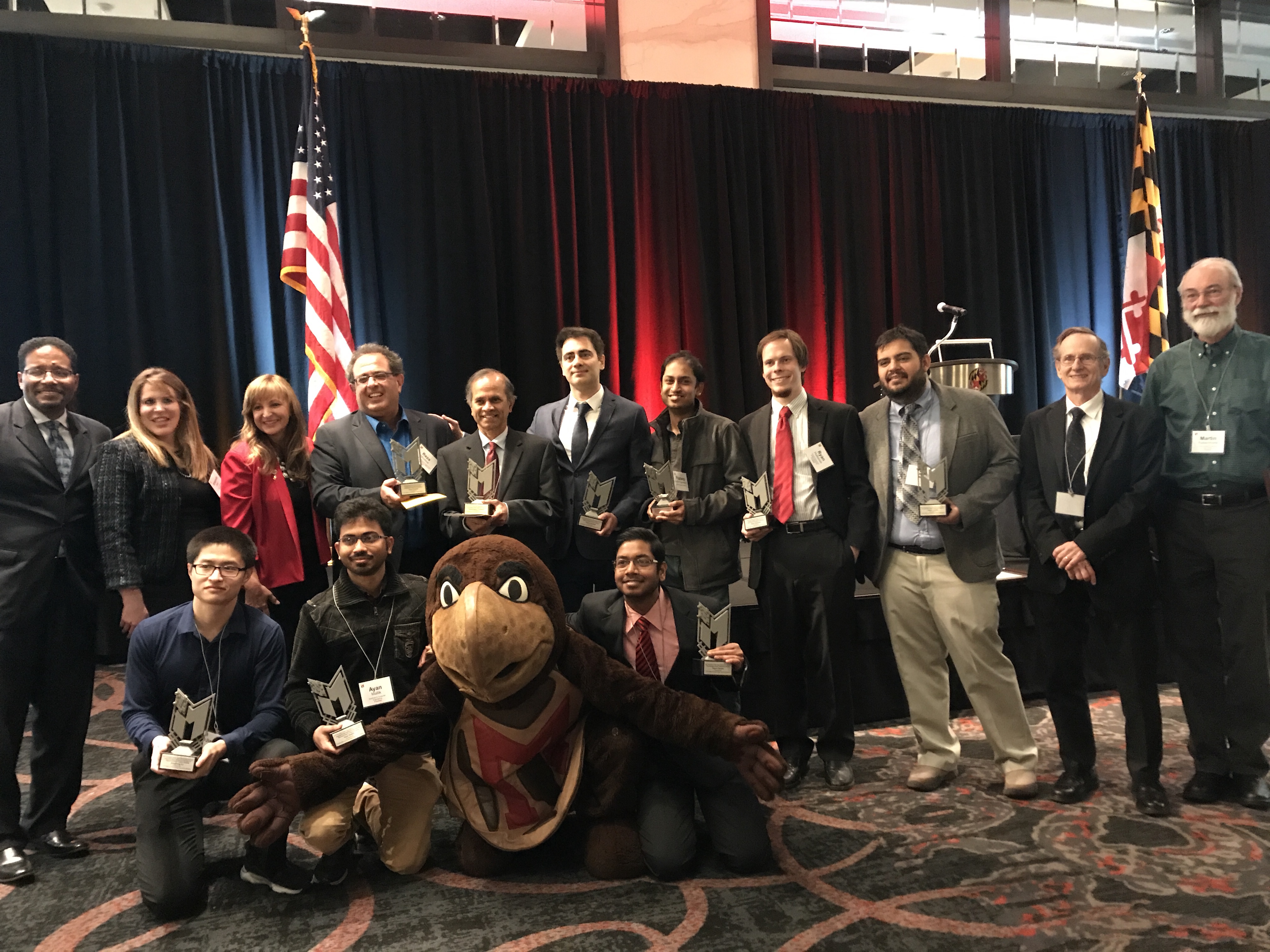Two graduate students and a professor won the University of Maryland’s Invention of the Year award on Wednesday for their electric vehicle battery charger.
The charger is 50 percent lighter and cheaper than ordinary electric vehicle chargers.
Today’s charging systems normally have two batteries: one that propels the vehicle and one that powers the auxiliary functions of the car, such as the headlights and air conditioning. Both batteries are powered differently, which makes the system inefficient.
[Read more: University of Maryland received two-thirds of patents granted to USM schools in 2016]
To solve this issue, Jiangheng Lu and Ayan Mallik, both electrical and computer engineering graduate students, and Alireza Khaligh, an electrical and computer engineering professor, combined both chargers.
“This is a very compact and cost-effective solution,” said Mallik, who has been working on this project for about three years. “It’s really an honor to receive this award, and it’s really good that the university recognized greener solutions as important.”
The battery also lets electricity move in both directions, instead of just powering the battery itself. This means the electric vehicle could potentially serve as a generator during a power outage.
[Read more: UMD professors create “super wood,” a material stronger than most steels]
The award was announced at this university’s annual Innovate Maryland event Wednesday, for which nine finalists were chosen from 169 disclosures, said Julie Lenzer, associate vice president of innovation and economic development.
“We are here to celebrate and recognize innovators, entrepreneurs and the partners we have in the larger community that makes it possible to do innovation at this university,” university President Wallace Loh said at the event. “What you are seeing is the birth of a culture of innovation at the university and this region.”
In addition to the overall award, the team also won the award for the physical sciences category.
In the information sciences category, a group of three researchers won for their facial verification software. This can identify a person’s face from millions of selections in a fraction of seconds, graduate student Rajeev Ranjan said.
“Humans recognize faces, but they don’t remember most of them. We are building a system that is trying to mimic the processing going on in the brain, but better,” said engineering professor Ramalingam Chellappa, who has been working on this type of technology since 1992. “The system we have built is 94 percent accurate and makes a mistake one in a million times.”
In the life sciences section, a graduate student, post-doctoral researcher and professor won for their sensor that can detect bacteria biofilm formation before symptoms begin.
“With the challenges we are facing in society like antibiotic resistance, this is the type of technology that we need to address that,” said bioengineering graduate student Ryan Huiszoon, adding that he was surprised to be chosen. “It’s a great honor, but it’s also just great exposure for the project.”
The winning inventions were judged based on their uniqueness, impact and potential for commercialization, Lenzer said.
The winners received a 3-D printed trophy as well as $1,000 per team. The overall winning team received a $1,500 prize, said Elise Carbonaro, a spokeswoman for this university’s Division of Research.
Other awards given at the event include the Corporate Connector of the Year, Mtech Venture of the Year and Celebration of Campus Innovators.
“I love innovation, and when I graduated, this wasn’t available. This world is incredible now with what Dr. Loh has done to build up this ecosystem,” said David Nguyen, who graduated from this university about 21 years ago and was a sponsor of the event. “For me to come back for the first time and see this, it’s fascinating and stunning and it makes your heart race a little bit faster.”



